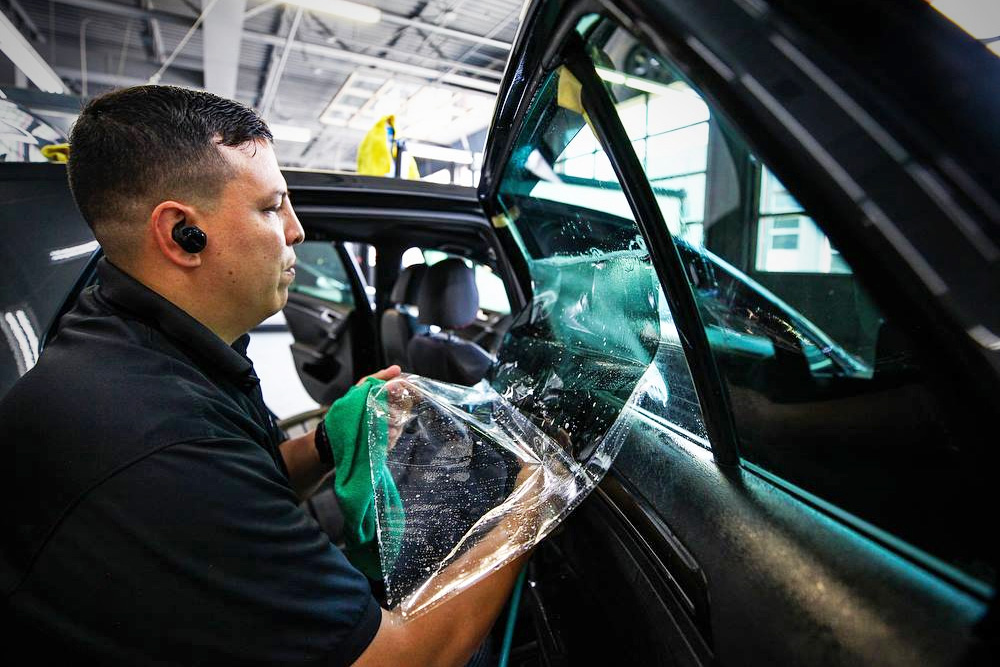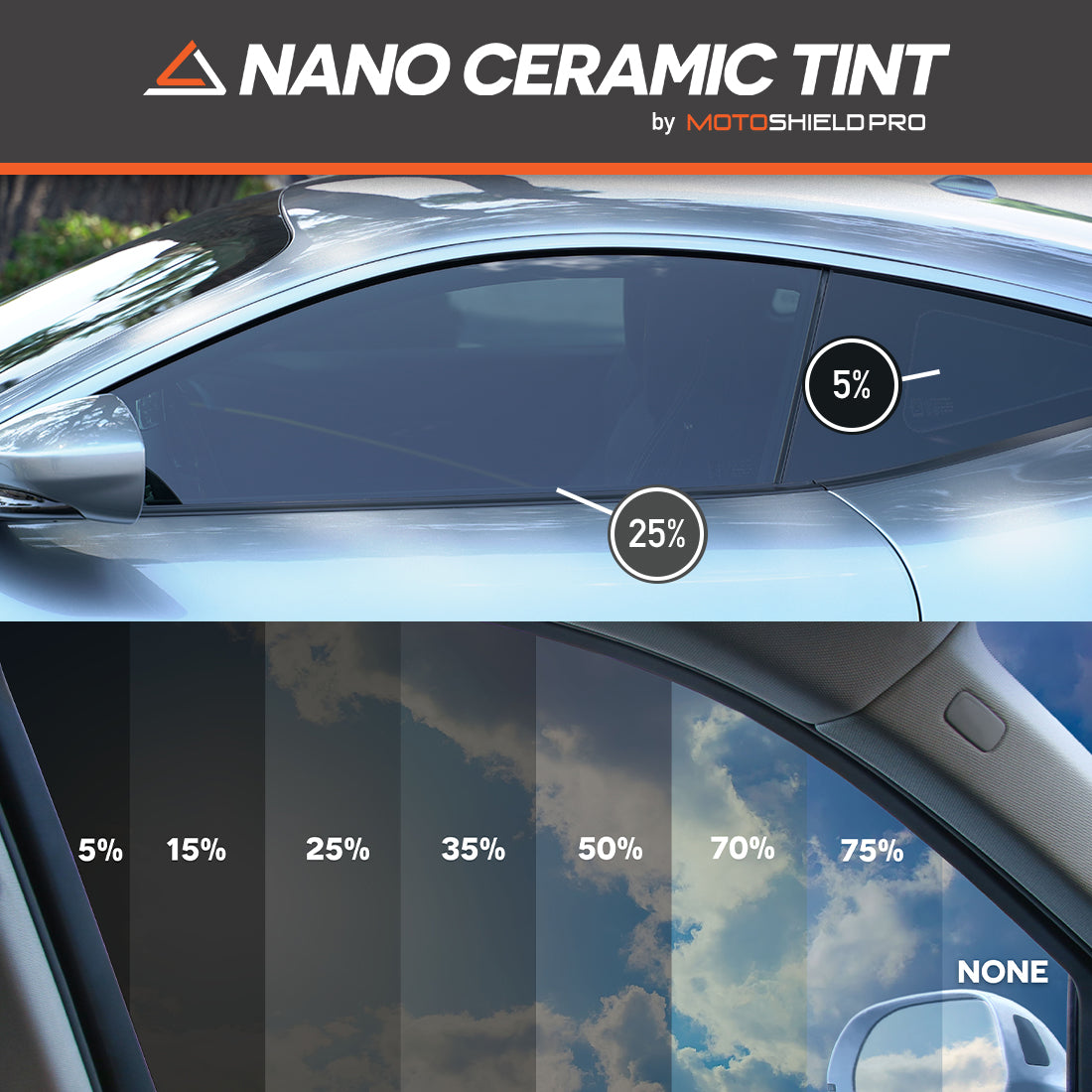Remain Cool and Comfortable: The Science Behind Window Tinting
Window tinting stands for a sophisticated interplay of materials science and functional application, operating primarily with a slim movie that alters the means light communicates with glass. This technology is not merely an aesthetic option; it plays a critical duty in decreasing solar warm gain, lessening glow, and giving considerable UV defense. As we explore the various mechanisms and advantages associated with Window tinting, it comes to be noticeable that its influence expands past comfort, influencing power intake and ecological sustainability. The inquiry continues to be: what aspects should one take into consideration when picking the perfect Window color for their certain requirements?

Exactly How Window Tinting Functions
Window tinting runs through the application of a slim film to the glass surface, which serves to change the means light communicates with the Window. This movie is typically composed of polyester or other synthetic products and is installed with numerous dyes and metals that influence light transmission and reflection. When light strikes the colored Window, a portion of it is taken in, while some is shown, and the rest goes through.

Moreover, Window tinting can enhance personal privacy and lower glare, making spaces much more comfy without jeopardizing presence. The efficiency of Window tinting differs based on aspects such as the sort of film used, the angle of light incidence, and the features of the glass. Comprehending these concepts is important for picking the suitable color for specific requirements and settings.
Benefits of UV Security
Among one of the most significant advantages of Window tinting is its capacity to provide efficient UV security. Ultraviolet (UV) radiation from the sunlight is a well-documented source of skin damage, including early aging and an increased threat of skin cancer cells (AO Detail Window Tinting). By incorporating Window tinting, people can considerably decrease their direct exposure to harmful UV rays, improving their general wellness and health
High-quality Window film can block as much as 99% of UV radiation, developing a more secure setting for occupants. This defense is especially helpful for those that invest expanded durations indoors, such as white-collar worker or residents in sunny climates. UV exposure can lead to fading of interior furnishings, artwork, and floor covering, resulting in expensive substitutes. Window tinting assists alleviate these impacts, preserving the aesthetic allure and integrity of indoor rooms.
Additionally, lots of Window film use a double benefit by lowering glow, which can enhance convenience and productivity. Overall, the execution of Window tinting functions as a proactive measure to secure health and lengthen the life of treasured possessions, making it a sensible investment for both residential and commercial settings.
Temperature Level Policy Mechanisms
Efficient temperature law is a vital benefit of Window tinting, as it adds to a more comfy interior environment. Window film are created to reflect, absorb, and send varying levels of solar energy, permitting a controlled administration of heat getting in a space. This guideline is primarily accomplished via the optical properties of the tint, which can obstruct a Recommended Site considerable percentage of infrared radiation while allowing noticeable light to go through.
By reducing warm gain throughout warmer months, Window tinting helps maintain a secure indoor temperature, decreasing the reliance on air conditioning systems. Alternatively, during cooler months, certain kinds of Window film can assist preserve heat within the structure. This twin functionality makes certain that passengers experience regular convenience despite outside weather.
Furthermore, Window tinting can reduce temperature fluctuations triggered by direct sunshine, minimizing the threat of warm areas near home windows. Consequently, the overall indoor climate becomes much more well balanced, improving passenger satisfaction and productivity. The science behind these temperature level policy mechanisms illustrates the significance of Window tinting as a useful service for improving living and workplace.
Enhancing Energy Efficiency
Power efficiency is considerably enhanced via the application of Window tinting, more structure upon the benefits of temperature policy. By decreasing the amount of solar warmth that goes into a building, Window tinting minimizes the dependence on cooling systems, bring about lower energy intake. This not just adds to reduced energy expenses yet additionally reduces greenhouse gas emissions related to power production.
Along with warm decrease, Window tinting also aids preserve stable interior temperatures, which can decrease the work on heating unit during chillier months. This dual advantage of managing both warm gain and loss cause a much more efficient general energy efficiency for industrial and residential properties alike.
In addition, Window tinting can safeguard furnishings and interiors from unsafe UV rays, which can trigger fading and deterioration gradually. By preserving the integrity of indoor spaces, building owners can lower the frequency of fixings and replacements, additionally enhancing expense financial savings.
Eventually, including Window tinting as part of an energy-efficient visit this web-site method not just optimizes comfort however also promotes sustainability, making it a sensible financial investment for those looking to enhance their power impact.
Choosing the Right Tint
Choosing the proper Window color is vital for optimizing the benefits of this improvement. The selection of color can significantly affect energy performance, aesthetics, and privacy. When taking into consideration Window tinting, it is important to review the different sorts of film available, consisting of dyed, metalized, and ceramic options. Dyed film supply a standard degree of warmth decrease and personal privacy but may discolor over time. Metalized film offer enhanced heat being rejected and raised resilience due to the reflective homes of metallic layers. They may interfere with electronic signals.
Ceramic Window film stand for an exceptional choice, combining superb thermal insulation with low reflectivity, thereby maintaining a clear sight. It is additionally important to consider the lawful policies regarding color darkness in your location, as compliance is necessary to make sure and avoid penalties security.
Additionally, examining your particular demands-- such as UV defense, glare decrease, and privacy-- will certainly direct your option process. Consulting with an expert installer can provide useful insights and suggestions customized to your situation. Inevitably, the right Window color balances capability and aesthetic appeals, adding to an energy-efficient and comfy environment.
Verdict

Window tinting represents a sophisticated interaction of materials science and sensible application, working primarily via a thin movie that alters the method light connects with glass.Window tinting operates via the application of a thin movie to the glass surface, which offers to modify the means light communicates with the Window. By incorporating Window tinting, individuals can substantially reduce their direct exposure to hazardous UV rays, boosting their total health and wellness and health.
Additionally, Window tinting can minimize temperature changes triggered by straight sunlight, minimizing the risk of hot places near windows. When taking into consideration Window tinting, it is necessary to evaluate the different kinds of film available, including colored, metalized, and ceramic options.